Dental Veneers in Iran
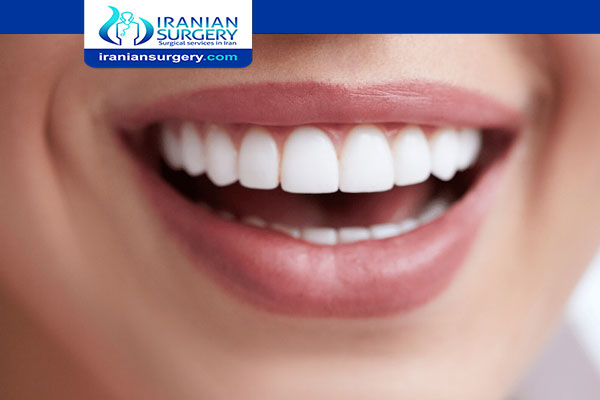
How much does Dental Veneers cost in Iran?
The cost of Dental veneer in Iran is around $ 120 per tooth while its global price is $800. So, if you decide to have Dental Veneers in Iran, reading this article can improve your knowledge about cost of Dental Veneers in Iran to a great extent and help you to choose the best clinic to undergo Dental Veneers in Iran.
On average, the cost of dental veneers in Iran is 200 to 600 percent lower than other countries in the world. For instance, the cost of a single dental veneer in Iran using the Swiss brand (Saremco) is about $ 110 to $ 130 while the same procedure would cost about $1100 in the UK and about $350 in Turkey.
How long do dental veneers take from start to finish in Iran?
On average, the dental veneers process from consultation to final placement takes between 5-10 days. After your initial consultation, your temporary veneers will be made in our cosmetic lab. Then, after your teeth are prepared and your temporaries are placed, your custom veneers will be fabricated. Dental veneering is done in approximately 2 sessions. Sometimes 3 appointments are required.
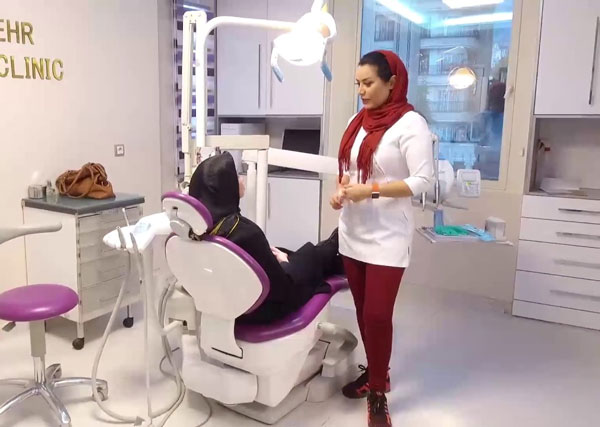
General information about Dental Veneers in Iran
In this article we provide you with a comprehensive description of Dental Veneers in Iran, the cost of Dental Veneers will be discussed in detail and a comparison will be made between the costs of Dental Veneers in Iran.
The following table describes general information about Dental Veneers surgery in Iran including Dental Veneers cost in Iran, recovery time, and to name but a few.
General Information |
|
Cost | $ 80- 150 |
Anesthesia | Local |
Hospital Stay | No |
Back to Work | The same day |
Duration of Operation | 3 visits |
Minimum Stay in Iran | 2 Weeks |
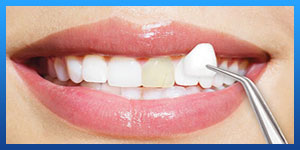
How can I find the best dentist for veneers in Iran?
Dental surgeons in Iran can make your face and teeth more appealing.
It is important that you seek the assistance of experienced and skilled dental surgeons in Iran who have provided a suitable condition for people with limited budgets to undergo dental veneer in Iran easily. It is worth explaining that the quality provided by Iranian dental surgeons is far higher than other countries including Turkey and India.
Dental surgeons in Iran, have performed numerous procedures annually which make them highly experienced, due to high demand and low costs of dental veneer in Iran, thousands of people travel to Iran every year to undergo dental veneers in Iran with the best dental surgeons at an affordable and reasonable price.
________________________________________________________________________________________
Plan your Dental veneers in Iran with the Best dentist surgeon.
Iranian Surgery is a medical tourism company in Iran that cooperates with the best dentist surgeons, specialists and clinics in Iran and offers world-class treatments at an affordable cost.
_________________________________________________________________________________________
Read more about : The Cost of Dental Composite in Iran
Read more about : Dental implants in Iran
What are Dental Veneers?
Dental veneers (sometimes called porcelain veneers or dental porcelain laminates) are wafer-thin, custom-made shells of tooth-colored materials designed to cover the front surface of teeth to improve your appearance. These shells are bonded to the front of the teeth changing their color, shape, size, or length.
The procedure for dental veneers in Iran is non-invasive, causing patients minimal discomfort, and is a great treatment for a dental holiday.
Dental veneers are a possible solution to help you achieve the look you desire. They are a popular choice for those with chipped teeth, a gap between teeth, or misshaped teeth. If you want to improve your smile, dental veneers are a simple option. Veneers are thin coverings that are placed over the front (visible) part of the tooth. They look like natural teeth.
Read more about : Jaw surgery in Iran
Before Dental veneers in Iran
What types of problems do dental veneers fix?
Veneers can be used to correct a wide range of dental issues, such as:
. Teeth that are stained and can’t be whitened by bleaching
. Chipped or worn teeth
. Crooked or misshapen teeth (Teeth that are misaligned, uneven, or irregularly shaped).
. Uneven spaces or a large gap between the upper front teeth (to close the space between these teeth).
Your teeth and gums must be healthy before you get veneers. Your dentist can treat any disease or decay before your veneers are placed.
Veneers are not always a good choice for patients who clench or grind their teeth, because the thin veneers may chip or break. If you clench or grind your teeth, your dentist may suggest you wear a plastic dental night guard while sleeping.
Although your dentist removes as little tooth enamel as possible for veneers, the process cannot be undone once the enamel is removed.
It is possible for veneers to come loose over time. In that case, new ones might be needed.
As with all your dental care, discuss all your expectations and treatment options with your dentist. Regular dental visits are a must for keeping your teeth and gums healthy.
Veneers are made of either porcelain or composite resin material. Your dentist will help you choose the material that is best for you. Each type of veneer has its own benefits.
Types of veneers in Iran
1.Porcelain Veneers in Iran
A porcelain veneer is a thin shell that is custom-made to fit on the tooth.
Benefits of porcelain veneers:
. They are strong and long-lasting
. They have a natural-looking surface
. Less tooth enamel needs to be removed than with a crown or cap
. They don’t stain easily
Read more about : Are veneers permanent?
What are the Risks, and Potential Complications of Porcelain Veneers?
Like any dental treatment, porcelain veneers are not without their risks. Things can and do go wrong from time to time. It is always important that you understand the limitations, side effects and potential problems that could occur with any treatment you are considering, and the costs that may be incurred to correct it.
The risks of porcelain veneers are:
. Non-reversible
Veneers are not removable, they are put on with the intention that they are never coming off. Admittedly most people who choose to have veneers are looking for a permanent solution to their cosmetic problems, but don’t be fooled into thinking you can just have them popped off at a moment’s notice and be back to square one. Once you have porcelain veneers, you will always need them.
. Destructive
In nearly all cases to a lesser or greater extent, the front surface of your teeth will need to be filed down removing some of the enamel to make way for the veneer. Even ‘minimal prep’ or ‘no prep’ veneers tend to require some drilling. Whilst they are less damaging (more conservative) for a tooth than a dental crown, they are more destructive than tooth bonding or composite veneers.
. Cracking
When you have hot and cold things to eat and drink, teeth expand and contract slightly and these thermal changes can potentially cause cracking of the veneer over many years. If the thickness of cement is greater than the veneer itself, polymerization contraction (the shrinking of the material as it sets) can sometimes cause cracking of the thin porcelain.
. Decay
Whilst porcelain or filling material cannot decay, you can still get dental caries around the margins of the veneer which can lead to them falling off if you do not maintain proper oral hygiene.
. Shrinkage of the gum
Your gums shrink up as you get older- this can be accelerated by gum disease or toothbrush abrasion but occurs naturally at a rate of 1-2mm every 10 years. This means the margins of your veneers that were once hidden, or at the gum line will become visible in the future and this may or may not be acceptable to you. Whilst only a cosmetic problem, the veneer may still be holding strong, it may, if you decide you want it corrected, it may need to be replaced.
Breakages- chipping and fracturing
This is more likely if you have an unfavorable bite (edge to edge), or grind your teeth. If you are a bruxist, wearing a splint is crucial to protecting your veneers. Other chips or break could possibly occur when chewing hard food items such as pips in olives, seeds or nuts so you would need to be extra mindful.
You should be prepared to pay the price for replacement porcelain veneers if this type of accidental damage occurs. Very minor chipping and fracturing may be smoothed or repaired without the need to replace the whole veneer. However any more than a minor chip and the whole thing will often need to be replaced. You sometimes can get away with repairing the fracture with a bit of white filling material but if it is the incisal edge (most common) getting this to stay on can be tricky.
A longitudinal study found that veneers that needed replacement were only slightly higher at 11% than those that could be repaired -8%.
. Staining
Whilst porcelain veneers are far more stain resistant than tooth bonding or white filling material, staining can still be a problem. Most people remain happy with the aesthetics, 80-100% of the time, according to a study over 10 years. 92% of veneers were deemed acceptable at 5 years and 64% at 10 years.
It is by looking at this kind of data and speaking to people who have had the procedure that we get an idea of what things may be like within few years. The importance of watching your diet and careful cleaning cannot be over emphasized in helping to keep your veneers looking good.
28% of these problems were in fact repairable meaning only 4% actually needed replacement at a 10-year recall.
. Sensitivity
Where appropriate every effort should be made by the dentist to keep the margins in enamel, however sometimes colour or tooth position may dictate going a little deeper into dentine in order to mask things completely.
Sensitivity to hot and cold may be a side effect if dentine is exposed. This is much more likely if temporary veneers are not placed, though it can happen with finished veneers too but generally to a lesser extent. After the final veneers are fitted, this sensitivity would be expected to disappear after about a week.
. It may fall off
Whether due to the bonding procedure, the fit of the veneer, decay, and stress from your bite, mechanical failure of the cement or the porcelain, or simply improper care- the veneer could de-bond and pop off. If this happens, keep the veneer and take it to the dentist to see what they can do.
Dentists should (no guarantees) if everything else is still intact and fits accurately, be able to clean the veneer and your tooth and re-attach it. If you lose it or swallow it, unfortunately a new one will certainly need to be made.
2.Composite resin veneers in Iran
A composite resin veneer is made from a tooth-colored filling material bonded to the tooth.
Benefits of composite resin veneers:
. Usually less tooth enamel needs to be removed than for crowns or porcelain veneers.
. May mean fewer visits to the dentist—sometimes these veneers take just one visit.
. Cost less than porcelain veneers
. Are easy to fix if they get damaged; although composite veneers are generally not as strong or wear-resistant as porcelain veneers, composite veneers can be repaired easily and quickly.
What are the risks of getting composite dental veneers?
There are several relatively minor risks associated with getting composite dental veneers. One is that your teeth may become sensitive after a layer of enamel is removed to make room for the veneers. Also, the veneers may not match the color of your teeth exactly. In some cases, veneers may fall off. If this happens, your dentist can correct the problem.
Are you an ideal Candidate for dental veneers?
Any person unhappy with the colour of their teeth can opt for veneers. It is important to keep realistic expectations in mind. Some patients who opt for this procedure include:
. People who have worn down, chipped or broken teeth.
. Individuals with irregularly shaped teeth that may have bumps or craters, which can be covered up with veneers.
. People who have gaps or widely spaced teeth. This can be fixed with veneering.
. Individuals who have discoloured teeth. This is the most common reason why people opt for this procedure. Smoking, some medications and root canals often change teeth colour, and veneers help to cover them up.
To determine if you are a good candidate for dental veneers, your dentist will schedule a preliminary consultation during which your oral health will be evaluated and all available treatment options discussed. (Most dentists prefer to offer patients the most minimally invasive options.) Treatment involving tooth preparation is irreversible, so it is important that your dentist discuss any alternatives that provide the same results but with minimal to no removal of tooth structure. If you and your dentist decide that veneers are the best option, the next step involves a thorough review of treatment details, including preparing your teeth for your specific veneer procedure and what will be necessary for them to look and fit correctly.
During your consultation, you will actively participate in the “smile design process.” By sharing your preferences for the shape, length, width and color of the veneers and the change in the appearance of your smile that you want them to create, you help ensure that your treatment will meet your expectations. It is important that your dentist understands your objectives during your veneer consultation.
Who should avoid a dental veneer procedure?
. People who want to change the shape of their teeth considerably due to extensive damage are better candidates for dental crowns.
. People who are only looking for a whiter color and no changes in shape should consider teeth whitening and not veneers.
. People with crooked dental arch or badly aligned teeth should not opt for veneers but for orthodontic treatment like braces.
. People who grind or clench their teeth often should not opt for the procedure as the veneers can be easily broken by the movement.
. If you have decayed teeth and suffer from periodontal diseases that cause itching, redness and swelling in gums, then you may not be able to undergo a veneering procedure.
What are disadvantages of dental veneers?
Cons:
. Alteration of teeth: To fit the veneers, the tooth in focus needs to be altered or partially shed. This leads to weakening of the healthy teeth. Customized veneers are created with proper measurements to ensure minimum loss to the teeth.
. Irreversible: The procedure of placing veneers is not reversible that is, once you get a veneer there is no way back. Careful consideration and diagnosis is required before opting this treatment. However, properly placed veneers rarely develop any complications.
. Sensitivity due to dentine exposure: Efforts should be made by dentists to ensure less exposure to the dentine. This exposure may lead to sensitivity problems. However, sensitivity disappears in a week after the permanent veneers are fit.
. Pricey: Veneers have high costs.
. Porcelain dental veneers may chip or crack if you bite your nails, chew on ice, or grind your teeth.
. Tooth decay under a dental veneer can occur, which may lead to necessary root canals and/or porcelain crowns.
What to do before a dental veneer procedure?
. Your teeth needs to be brushed and mouth needs to be rinsed with mouthwash before the procedure.
. Smoking should be stopped two weeks prior to the procedure. Although this is not an invasive procedure, the effect of smoking negatively affects the new veneers that will be implanted.
. You may take prescription medication advised by your physician. Any alterations in the course should be inquired about, prior to your procedure.
. Wear comfortable clothing on your appointment days.
Read more about : Can permanent veneers fall off?
During Dental Veneers in Iran
This first step involves your active participation. Explain to your dentist the result that you are trying to achieve. During this appointment, your dentist will examine your teeth to make sure dental veneers are appropriate for you and discuss what the procedure will involve and some of its limitations. He or she also may take X-rays and possibly make impressions of your mouth and teeth.
Steps to place porcelain veneers in Iran
. To prepare the teeth, the dentist usually removes a small amount of enamel from the front and sides of the teeth. This makes room for the veneers so that your teeth look natural.
. The dentist makes an impression, or mold, of the prepared teeth. The dentist also decides on the veneer shade that will be best for your smile.
. The impression is sent to a dental lab that custom-makes the porcelain veneers to fit your teeth. This may take several days. The dentist may give you temporary veneers to wear in the meantime.
. At the next visit, the dentist places the veneers on the teeth to check the fit and shape. After any adjustments, the teeth are cleaned and the veneers are bonded to the tooth.
. Further changes may be made at a later appointment.
Steps to place composite resin veneers in Iran:
. After the teeth are prepared or reshaped, the dentist carefully bonds and sculpts the composite material using a color that is best for you.
. A special light is used to harden the composite and bond it to your teeth.
. The veneers are smoothed and polished to look like natural teeth.
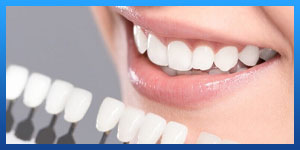 After dental veneer in Iran
After dental veneer in Iran
. Veneers can chip or break under pressure. Avoid biting your fingernails and chewing on hard objects, such as pencils or ice.
. It may take you a few days to get used to the feel of your veneers. But do let your dentist know if your bite does not feel right after the veneer has been placed. He or she will correct it before you leave the office.
. Keep your teeth and gums clean by brushing and flossing each day. You can still get cavities under or around veneers.
. If playing sports, you must wear a mouth guard.
. A soft diet is recommended for the first few days after the procedure. It will take some time before you get adjusted to the new structure of your teeth.
Recovery and post-procedure care
It is a common misconception that all dental procedures are painful, although there may be some recovery involved. This is true in cosmetic dentistry as well. However, the process involved depends upon the procedure. With the application of veneers, the results are drastic but the recovery time itself is minimal.
Veneers are durable and have been shown to last for many years before requiring replacement. Seeing your dentist and hygienist for regular examinations and dental cleanings is important for maintaining the health of your mouth and longevity of your restorations.
Aftercare is extremely important. Chipped or fractured porcelain veneers cannot be repaired, so your dentist will advise you of the costs and added time associated with replacing a damaged restoration.
To reduce the risk of damage, do not bite or chew on hard objects such as nut shells or bones, and do not use your teeth to open or tear packages. Your dentist also may advise you to avoid certain foods that could cause damage.
Brush and floss your teeth as you normally would, and be sure to use a non-abrasive toothpaste. Because of the fact that veneers are highly polishable, the risk of staining them with food or drink after the procedure is complete is greatly reduced. However, brushing after drinking red wine, coffee, tea or soda is advisable.
Read more about : Do Teeth Need to Be Filed for Veneers?
How long do dental veneers last?
Veneers generally last between 7 and 15 years. After this time, the veneers would need to be replaced.
What is the difference between veneers, crowns, and implants?
Dental veneers, crowns, and implants can all improve the cosmetic appearance of the teeth. However, there are differences between them.
One difference between veneers, crowns, and implants is the area of the tooth that each option covers.
Dental veneers mainly cover the front of a tooth. By contrast, crowns cover the entire tooth, including the front, back, and all the sides. As a result, dentists use crowns to repair broken teeth, including teeth that have little structure left. Crowns can also help strengthen the teeth they cover.
Implants, meanwhile, are bolt-like structures that attach to the jawbone to replace missing teeth.
When necessary, a dentist may use an implant to secure a crown in the mouth. This may be the case if a person is missing a tooth or a tooth is irreparable because it is too badly broken down and requires removal.
Essentially, dentists use crowns to build up teeth that are badly damaged, whereas implants replace missing teeth. Veneers improve the appearance of teeth that are mostly still intact.


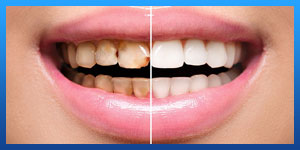
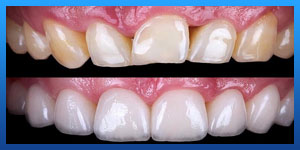
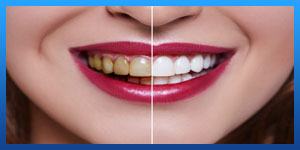
4 Comments
Hello I am from Germany and i would like to know how much 16 veneers would cost ?
Hello Cansel, the cost of veneer varies city to city and will depend on the brand of veneer the doctor use, but in general it can be something between $100-250.
Hi , i’m from uk.
How much does cost of a full set of veneers in Iran?
Porcelain veneering or porcelain veneers in Iran costs around $130 per tooth while Lumineers which uses cutting-edge technology to create ultra-thin veneers is about $ 350 per tooth. Composite veneers cost less, around $80 per tooth.